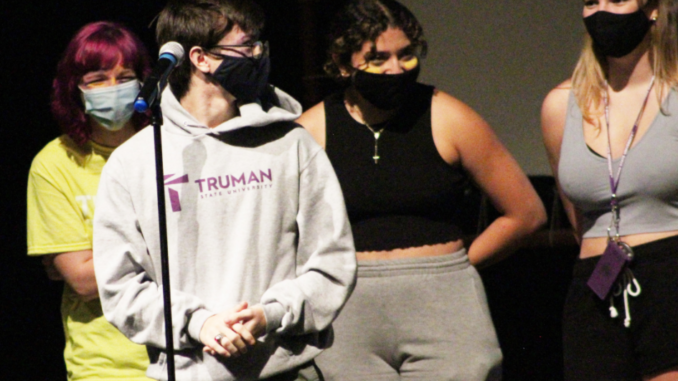
Truman’s number of new students jumped 10.4% from last fall, an indication that the university could eventually see a return to pre-pandemic numbers in the coming years.
This year, the number of newly enrolled students was 10% up from last year’s number of 891.
The increased number of new students doesn’t tell the whole story, said Ryan Myzak, director of admissions.
“For new incoming first-year students we are actually flat to a little bit down compared to last year,” Myzak said. “But, we’ve seen increased numbers of transfer students, a lot of graduate students that have come in the new programs we’ve started and the existing ones that we’ve had.”
This non-traditional mix of students is likely due to several changes that the admissions staff has made since Myzak arrived last December.
Attracting more transfer students has proved to be a major factor in this year’s success. Myzak said that he and his staff began offering free credit transfer evaluations to transfer students in order to make an education at Truman more accessible to individuals seeking to change schools.
“We were able to make a lot of changes for the fall intake that were able to increase headcount,” Myzak said.
Returning international students were a key contributor to the recent growth.
Assistant director of international education, Will Storm, pointed out several factors that contributed to the growth and return of international students to Truman. The most important factors were reductions in health concerns and an increase in access to visas.
Last year’s interest in coming to the United States was extremely low because of Covid, Storm said.
“This year we are seeing a strong increase in that interest again, people are feeling ready and eager to come to the U.S. to study.”
That increased interest has consequently resulted in slow processing times for visas and backlogged embassies abroad.
Storm highlighted the backlog as a fundamental explanation for why we did not see rising numbers in the previous year.
“It was very hard to get an appointment, many embassies weren’t even taking appointments at that time,” Storm said. “There were also issues travelling: getting a flight, getting to the United States, lockdowns, and government decisions to limit travel from certain places.”
Due to the demand for visas and international education, Storm said that the department is anticipating a larger than average class in the coming spring.
Storm also said that, to date, the delta and lambda variants have not had a tangible impact on the visa process for international students.
“We still really managed to get a great incoming class this year,” Storm said. “Our incoming class for this fall is almost comparable to what it was two years ago, before the pandemic. We’ve bounced back from that big covid impact”
“There is a human aspect to this, too. It is an incredibly diverse group of students that are really tenacious and worked very hard to get here. We do want numbers, and to see enrollment increase, but we also hope for diversity of experiences and to bring that to our community on campus,” Storm said.
Myzak pointed out that the same upward trend applied to the overall new student numbers as well, indicating that applications are already up compared to this time last year.
Though the numbers indicate that a recovery in overall student population may be on the horizon, there is still a high level of uncertainty about what lies ahead for Truman’s enrollment numbers.
“We know demographics are going to shrink” “If we’re thinking long-term planning, 10-15-20 years, it’s a very different market in terms of what we can expect for size” Myzak said.
Both Storm and Myzak are optimistic about enrollment as Covid cases recede and consumer confidence increases.
